By Cliff Rames © 2014
Sensory overload. That is how I would describe any one of my whirlwind visits to Croatia.
I mean it in a positive way. The country is simply brimming with vinous, culinary and natural delights. Gnarly old grapevines improbably clinging to sun baked seaside slopes. Nearly 1,200 islands sprinkled like seashells on the impossibly blue Adriatic. Countless villages and hamlets of seminal charm nestled in coves and on mountainsides. Fresh caught seafood and farm-to-table produce so succulent and cooked to perfection. The warm faces of family, old friends and new acquaintances (and an occasional donkey). Swoon-worthy views and secret spots where you can enjoy the sights and sounds of nature that – to this New York City boy – are so intimate, pure and wonderful.

And then there is the wine. Indigenous grapes, local producers. Most of it delicious and distinct. So this is what all this beauty… this land…this Croatia tastes like, you may be inspired to declare.
On exceptional occasions the experience of tasting a truly great wine may incite tears. That’s okay. I have no shame when it comes to crying. Heartbreak. Joy. Bitter disappointment. Serendipitous wonder. Unconditional love. Betrayal. People being unselfishly kind. People being selfishly mean. A great joke. A cruel twist of fate….Whatever the reason, flowing tears – like great wine – soothe and fortify the soul.
Luckily I managed to keep a dry eye when I recently found myself surrounded by so many great wines and winemakers eager to share their stories. There the saturation was complete, the proverbial glass overflowed, the senses electrified with discovery. Yet composed I remained. Reflective even. Like when you hear a beautiful piece of music. You forget yourself. Become untethered from earthly bounds. Surrendering to the sound. Absorbing the vibrations. Wrapping yourself in the fuzzy blankets of the universe.
So it was at the annual Dalmacija Wine Expo (DWE), held in Split on April 24-25, 2014 at the hotel Radisson Blu. Attending for the first time, I eagerly attended as many workshops, side events, press trips, and after parties (there are usually several occurring simultaneously) as humanly possible. But mainly I wanted to taste, taste, taste – and listen. See what new styles, trends, and labels were emerging on the ever-dynamic, never more exciting Croatian wine scene.
While I couldn’t possibly taste everything (apologies to any wineries I may have missed), I attempted to gather a cross-section of examples from as many different appellations and native grape varieties as possible. Bravo to the DWE organizers who made it easy: there was a whole table dedicated to wines made from indigenous varieties, complete with little take-away info cards. Well done!
Looking back now, three things stand out in my memory as highlights – or perhaps revelations – from those two awesome days at the DWE.
1. The quality of Plavac Mali wines is improving but stylistically a work in progress. One interesting feature at the Expo was a workshop, presented by Saša Špiranec, called “The Potential of Plavac Mali from the 2011 Vintage”. Filling out the flight of 14 wines were Plavac Mali examples from an equal number of wineries and six distinct growing areas in Dalmatia: Komarna, Konavle, Hvar, Brač, Pelješac, and Dingač (I include Dingač as its own growing area even though it is a sub-appellation of Pelješac).

2011 in Dalmatia was very warm and dry, conditions that made for excellent ripening, and good concentration of sugars, phenols and flavor. As a result, most of the 14 wines registered between 14-16% ABV. But the bold, concentrated fruit, ripe and structured tannins, acidity, and oak treatment created balance and integrated the high alcohol. But no doubt, these were big wines that – 14 glasses later – knocked any remaining wind out of my jetlagged sails.
Styles ran the gamut from traditional, to New World, to experimental. My favorites were of course the styles that I felt were a “true” expression of Plavac Mali. And what is a “true” expression of Plavac Mali? Of course this is a very subjective subject, as demonstrated by this tasting. Nonetheless I would wager that it is a style rooted in old school taste: a little bit rustic and rough around the edges, with a bright, translucent cranberry red/ruby color; a nose reminiscent of brambly red and black fruits, dried fig, black olive, sunny Mediterranean herbs, and freshly shucked mussels; ripe, firm and gripping tannins; and a tiny touch of earthy funk.
Examples of this style that I liked were Carić Plovac Ploški (Hvar); Stina Majstor (Brač); Korta Katarina (Postup/Dingač); Goranko Poljanić (Dingač); and Rozić Plavac Mali Mili (Pelješac).
What I did not prefer were the wines that seemed to be trying to be something other than Plavac Mali. For example, many of us in the seminar agreed that the Maestral Plavac Mali 4 Bofora (Pelješac ) tasted like young Bordeaux. A couple others were so deeply colored and concentrated that one wonders what happened, like when you come across a jet black Pinot Noir.
However, some of the newfangled styles were quite pleasant and would certainly appeal to fans of bolder, richer wines. These included: Volarević Plavac Mali Syrtis (Komarna); Crvik Plavac Mali Pomet (Konavle); Marlais Plavac Mali Škrapa (Pelješac ); and Saints Hills Sv. Lucija (Dingač).

On a positive note, unlike Plavac Mali of a few years ago, none of the examples we tasted showed signs of fault or excessive evidence of the Dalmatian curse, Brettanomyces , that unwelcome bad yeast that kills off fruit flavors and infuses a wine with an unpleasant horsey or dirty cellar smell. I was especially pleased to taste the Skaramuča Dingač, which in previous vintages suffered from a Brett infection but was now focused and clean (but with perhaps a touch too much oak).
2. The Šibenik wine-growing region is on the rise. To be clear, this wine-growing region in slightly cooler northern Dalmatia is not new to the scene. Like elsewhere in Croatia, vines have been cultivated here for thousands of years (my grandfather once had vineyards around Tisno and Murter) and wine is a deeply embedded tradition and an essential part of daily life. Yet the region – which includes the Skradin and Primošten areas – is often overlooked and overshadowed by the more well-known and glamorous appellations and islands such as Hvar, Pelješac, Dubrovnik, and Korčula.

Yet in 2006 it was BIBICh winery in Plastovo that lead the first wave of Croatian wine imports to the USA. Today, winemaker Alen Bibić’s wines are among the most sought-after Croatian wines on the U.S. market and often sell out each vintage. Mr. Bibić has also made a mark for himself as a champion of Dalmatia’s lesser known – and sometimes disparaged – indigenous grapes, such as Babić, Debit, Plavina, Lasina, and Maraština, as well as international varieties (Grenache and Syrah) normally not associated with Dalmatia.
Inspired by the BIBICh success story, other small family wineries in the neighborhood began to take seriously the idea that they too could be commercially successful, quality wine producers. It was these wineries and wines that caught my attention at DWE, particularly two family estates that share a common surname, Sladić.
I was first introduced to the wines of Juraj Sladić about 5 years ago and was very impressed by his potential and passion. Since then his lineup has expanded and quality has improved. His 2012 Debit – a local white variety that was once dismissed as nothing more than industrial jug plonk – was tight and zesty, with lemon pith, bitter almond, crushed limestone and a palate-tingling finish. The 2013 Maraština was very aromatic and juicy, with exotic fruit notes of pear and gooseberry laced with crunchy minerals. And his 2013 rosé (see below) was a delight (a full review will follow in my next post).

But it was the charms of the 2011 Lasina to which I completely succumbed. “The Pinot Noir of Dalmatia!” I exclaimed in my notes. An unfiltered beauty macerated for 14 days and aged for one year in once-used oak, it was lightly colored and splendid with aromas of strawberry, forest floor, dried flowers, and woodsy spice. The 2012 Cuveé (50% Plavina/50% Lasina) was also lovely, with sour cherry, sun-kissed oregano, and sweet dark chocolate notes on a frame of mild tannins and refreshing acidity.
Adding to my inspiration to highlight this region were the wines of Marko Sladić. With vineyards in the Plastovo/Skradin area (like BIBICh and Juraj Sladić), Marko makes wine from many of the same varieties yet has a style – and labels – that are distinct. His 2013 Maraština was juicy and round, with simple, refreshing notes of citrus, green fig, chamomile flowers, and a hint of hazelnut. A 100% Plavina rosé was lively and delicious with discreet strawberry, rhubarb, and hibiscus flower notes and a well-structured sea mineral finish. The 2012 Plavina red was juicy and youthful, packed with red fruits (raspberry, cherry, pomegranate), soft tannins and a tartness on the finish that makes this a wonderfully food-friendly wine. His colorful, coyote labels are pretty cool too!

But it was a new name in the region that really got me excited: Birin, a young winemaker who is creating magic in a backyard garage near the resort town of Vodice from grapes grown in his family vineyards. His 2013 Debit was clean and bright, laser-focused and crystalline with zippy citrus and crushed seashell minerals. A 2013 Maraština was lovely with pear skin, green fig and exotic fruits on a long mineral finish.
More thrillingly, the Birin 2012 Babić was electric – wild and coiled with tight red and black fruits and blazing acidity. While still very young and precocious, it was exhilarating to taste and even more inspiring to speculate about how it will develop over the next year or so. A winemaker to watch!
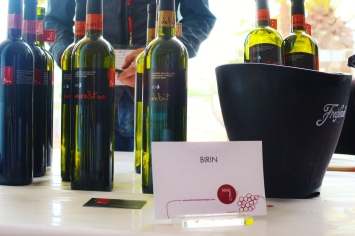
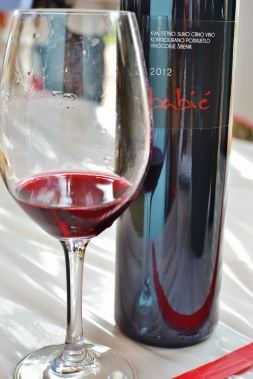
Speaking of Babić, anyone who has been following my posts over the years knows, it is one of my favorite varieties and potentially one of the best indigenous reds in Northern Dalmatia if not all Croatia. Benchmark producers include Gracin, Piližota and Vinoplod.
One interesting note: at DWE I tasted an unusual blend of Babić and Plavac Mali jointly produced by Babić master Leo Gracin of Primošten and Dingač winemaker Vedran Kiridžija. They call it Kontra, which in Croatian means opposite or against. It was somewhat Port-like with full, rich, mouth-gripping black fruit and earth flavors and a long finish. I’m not sure what they are trying to achieve with this unorthodox blend (in which I felt that the Plavac Mali dominated) of two very distinct grapes, vineyards, and terroirs – sort of like blending a Grand Cru Bordeaux with a Grand Cru Burgundy – but I’m sure it will find its fans and is just another example of how progressive, creative and dynamic the Croatian wine scene is at the moment.
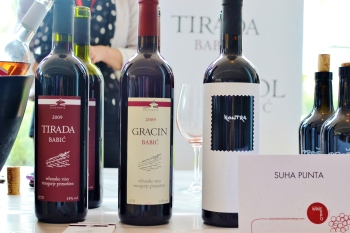
So keep an eye on this under-the-radar region. There is a lot of interesting stuff fermenting there!
3. Rosé from Dalmatia could be the next Big Thing. At this writing it is the first week of summer. Long days, balmy nights. The heart of rosé season. In the last week I have with gusto consumed five bottles of rosé. Each different: one from Bordeaux, one from Provence, one from Spain, one from the Finger Lakes, and one from Croatia.
Croatia? Yes! True, a few years back, it was difficult to find a good quality rosé from Croatia. Among older drinkers there has traditionally been the attitude that rosé is “not real wine”. But thanks to a new generation of wine makers and consumers, I am delighted to report that Dalmatia is quickly becoming a source of pleasing, well-made and food-friendly rosés made from indigenous varieties such as Babić, Crljenak Kaštelanski, Lasina, Plavac Mali, and Plavina (although be aware that most are not exported; you have to go to Croatia to enjoy them).

When you think of the climate and landscape of Provence, France – the homeland of quality rosé, in many ways Dalmatia is similar: Hot, parched summers; rocky hillsides alive with cicadas; scrub pine forests tumbling down to the shores of a sequined sea; olive groves, fig trees, wild herbs, feral goats, boars and cats; lavender scented air; ancient stone houses with tended gardens and patios; outdoor tables adored with fresh tomatoes, olive oil, baguettes, domestic cheeses and charcuterie, wine from the nearby vineyards.
Most of the Dalmatian rosés I tried at DWE were excellent and evoked visions of “the Mediterranean life”. Of friends gathered in the shade of a grapevine arbor to sop up virgin olive oil with crusty bread, salute happiness and success with chinking glasses, tell stories and jokes, sing songs of glory days and lost love, and finally, sit in reflective silence, nap, daydream….
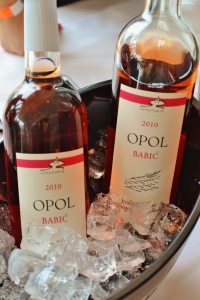
The best of these Dalmatian rosés (called “Opolo” by some producers) were salmon to pale pink colored. Full of bright fruit flavors (raspberry; cherry; cranberry); hibiscus flowers; saline minerality, and good cheer. My favorites were produced from Plavina or blended with Lasina or Babić (Juraj Sladić; Marko Sladić). But others were made from Crljenak Kaštelanski (Vuina) and Plavac Mali (Jako Vino; Miloš; Saints Hills; Senjković). All were lip-smacking good.
Which leads me to think: If Dalmatian wine producers continue to make such high quality, tasty rosés, and if tourists and other wine lovers discover them and enjoy them as much as I, then perhaps Dalmatia can become a new boat on the rising tide of rosé’s current popularity. Of course the quantity of production can never match that of Provence or Bordeaux. But who cares. In the vastness of the blue sky even a hummingbird can fill the world with wonder.
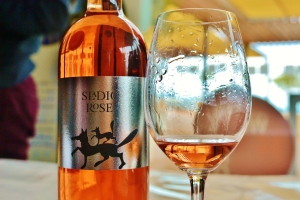
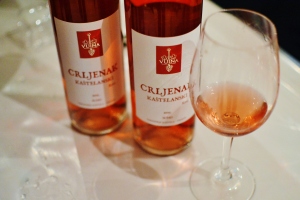
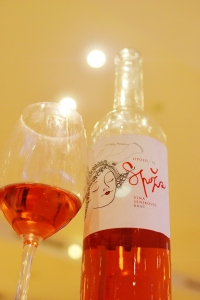


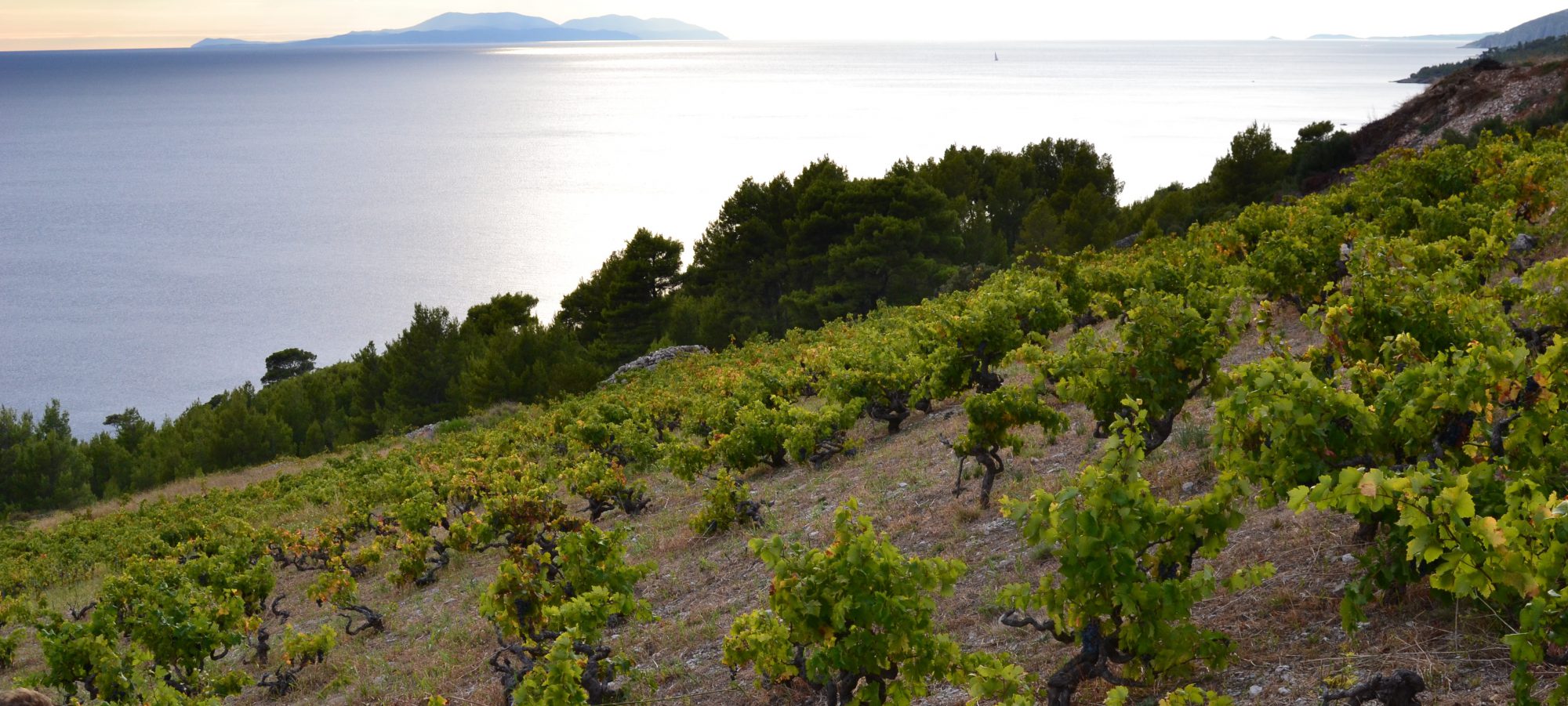

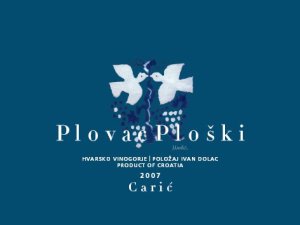

Cliff,
Really nice report. I trust your taste and your words. You are one of the only sources for original content on Croatian wines. Would be awesome if we could find a way to do something more together. At the least we should plan some tastings together. At the most, who knows…
have a great weekend!
Stetson
Reblogged this on Croatia, the War, and the Future and commented:
Sensory overload with good drops of Croatian wines – gotta love it!
Where can I get saint hills nevina wine? I had it in Croatia last year but cannot find it anywhere. narnold741@aol.com
Hi Nancy,
Unfortunately SH Nevina is not currently available in the US. It was here until recently when it sold out. You can check the Blue Danube Wine Company and Vinum USA websites for other wines from Croatia available in the US.
Best,
Cliff
I like Croatia wine very much. This summer I plan to visit peninsula of Peljesac. I hope I can find the winery that have room for staying. Can you give me some suggestion?? Thanks
It is delightful to see such a wonderful review of the Croatian wine scene. I am not Croatian but met some wonderful athletes from Croatia that were here in the Atlanta area in the mid-90’s. and have become close friends with the family. They encouraged my husband and I to buy a property on the island of Hvar right next to a winery as we are such wine fanatics so we have enjoyed the wines immensely while there and gotten to know the many winemakers on the island. It has been an awesome experience. I have to encourage any wine travelers to consider Croatia as a destination. It is an amazingly beautiful country especially along the coast. And much less expensive than Italy although only a relatively short way from the west coast of Italy.